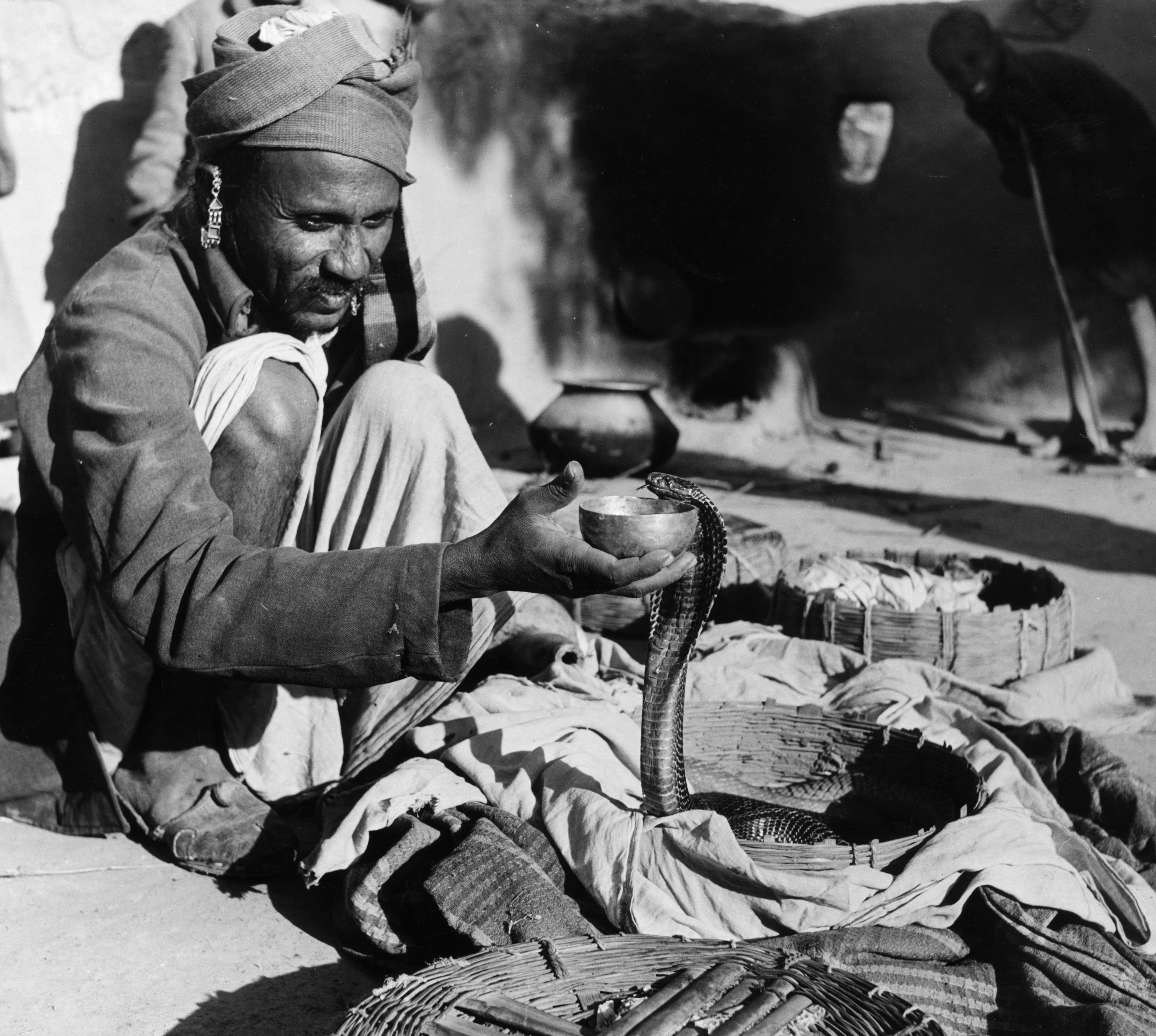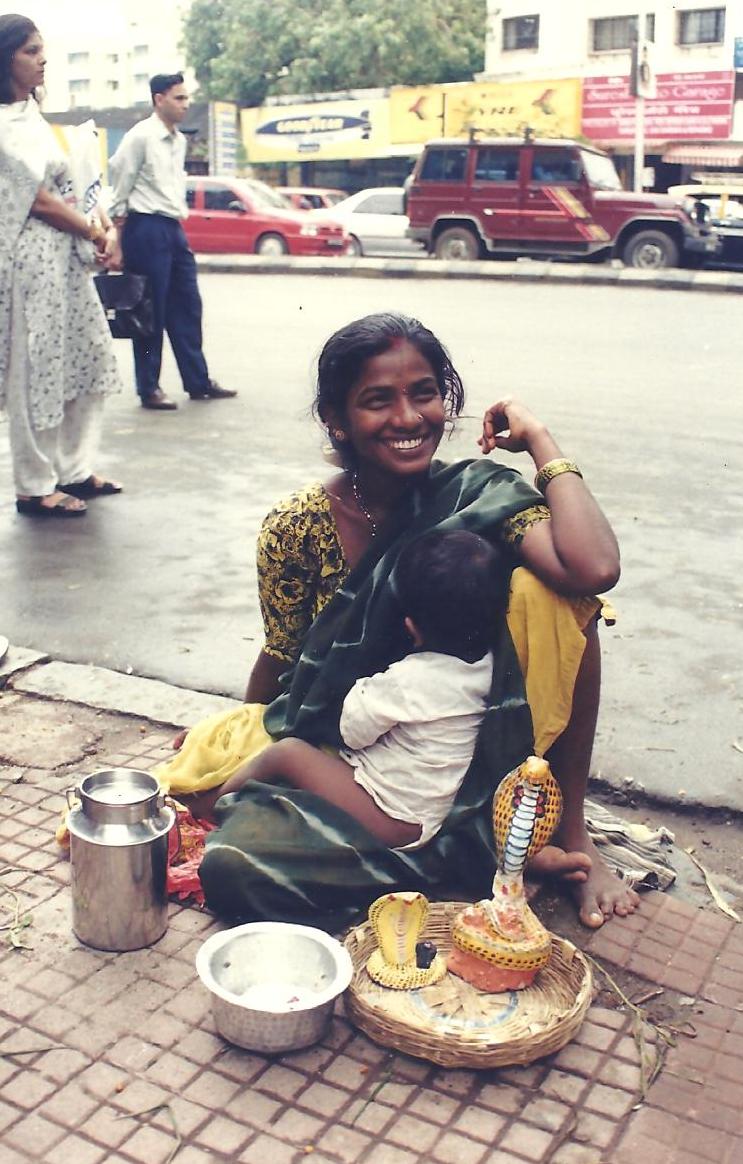
As a part of worship, cobras are offered milk, which was never and will never be food for cobras, or for that matter any snake in the world. But religious fanatics, who are blindfolded to the realities of the natural world, indulge in such senseless acts (that some people prefer to call tradition) and therefore patronise the snake-charmers without realising the consequences of their acts, often caring little about what the snakes have to go through to satisfy their beliefs and 'religious sentiments'.
Once caught, the mouth of the snake is stitched with thread to prevent it from eating anything. This is done at least two-three weeks prior to the day of Nag Panchami to keep them thirsty and hungry. These starved snakes would then 'drink' anything that is offered to it - whether it is milk or a soft drink.

circa 1955: A snake charmer feeding a cobra sugar water in India - Getty Images
Let's get some simple biological facts right - snakes are reptiles and milk does not form a part of their diet by any stretch of imagination. The drinking of milk is a phenomenon seen in mammals only. Unfortunately, snakes subjected to torture by snake-charmers drink milk in desperation; but it is still unnatural. Neither does it like milk nor does any supernatural power drive it to drink it. In fact, milk is akin to poison for snakes and at most always results in severe indigestion.
At times, 'devotees' are seen pouring bowls of milk over the snake's head, which also has superfluous use of haldi, kumkum and other powders that form a part of puja rituals in India. The milk along with other powders blocks the snakes nostrils and enters its lungs and eyes. Snakes often die a slow painful death after this.
Death is not where it ends. Often the animal is put to other uses. Records of snake skin reaching the black market for sale and further in making bags, belts, etc. are commonplace. Thus, an apparently 'pious' act may result in ruining a creature that has an important role to play as biological pest controllers by eating rats and mice that form a majority of their natural diet.
The story of Battis Shirala
Battis Shirala, a village in Sangli district of Maharashtra, used to be known for Nag Panchami celebrations. A few weeks before the day, villagers would go snake-hunting, catching hundreds of snakes and eventually using them for the rather inhumane live snake worship. Thankfully, a Bombay High Court order put a stop to this practice in 2013.
However, as reported in newspapers a few days ago, Prakash Javadekar, Hon'ble Minister of State (Independent Charge) Environment, Forest and Climate Change, gave an assurance to some people from Battis Shirala that he will revive this culturally important 'tradition'.
He reportedly said that he would make the necessary changes in the law in the forth-coming winter session of the Parliament so that such traditions are permitted to be celebrated. He reportedly also said that he would himself take part in the festival next year.
One wonders what has driven our Minister to make such a statement that goes against the ethos of what his Ministry is meant to protect. More importantly, there could be other lesser known villages such as Battis Shirala in India that lack any legal intervention till date.
Permitting live snake worship is equal to legalising the act of catching snakes and permitting the tortures under the pretext of tradition. Any attempt to dilute the laws would prove to be disastrous in the long run.

A lady sits with clay cobra figurines, replacing the practise of catching and displaying live cobras on Nag Panchami - Photo by Kedar Gore
India's culture has always revered life and has taught us to worship different forms of nature symbolically to ensure its protection and conservation. Unfortunately, today people follow these traditions blindly and without understanding the very purpose behind these rituals. It is our own shallow understanding of our rich culture that is responsible for acts such as the live snake worship that we blindly follow without understanding the essence of such traditions. Worship snakes, but, symbolically. Put an end to live snake worship.
Kedar Gore has been actively involved in wildlife conservation for the past 20 years. He currently works as the Director of The Corbett Foundation.